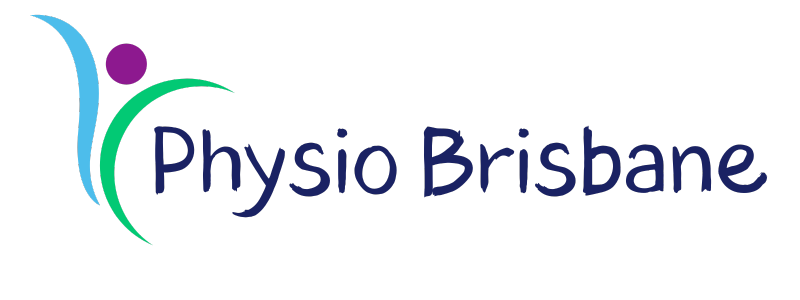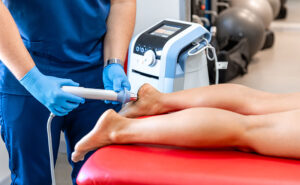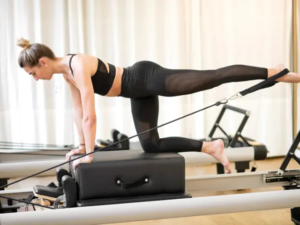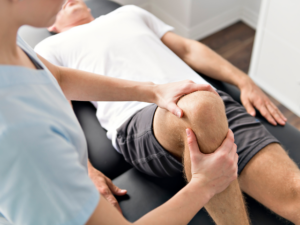Low back pain (LBP) according to WHO remains the leading cause of disability worldwide with low physical activity levels, smoking, high physical stress and obesity being named as some of the risk factors that can cause or worsen lumbar conditions.
Back home, Pureprofile’s 2024 independent survey called The Impact of Back Pain & Musculoskeletal Injuries in Australia, revealed that of the 1006 respondents, 907 have experienced a back related MSD with 98% experiencing one in the past 12 months; supporting WHO’s data from the year prior.
But perhaps one of the more concerning findings is that some patients rely on medication alone to manage their back pain issues, which can be detrimental to their long-term health, back pain included.
When it comes to treatment and management, WHO recommends physiotherapy as the primary approach for improving muscle strength and flexibility, which is to be complimented by healthy lifestyle changes and habits.
But for starters, what exactly is physiotherapy? And is it for everyone?

How Do I Know if My Back Pain is a Disc or Muscle?
When you have a herniated disc, there is a potential for nerve damage, which can exacerbate lumbar pain. This type of pain is often more intense and debilitating. On the other hand, muscle pain will give you a general feeling of soreness. However, it can get worse if left untreated and unchecked.
But to make sure whether your lower back pain is disc- or muscle-related, we encourage you to consult with us at Physio Brisbane to get an accurate assessment and recovery plan for your condition.
Is Physiotherapy Good for Back Pain?
Physiotherapy can help reduce the discomfort caused by acute low back pain.
Individuals who struggle to move around and perform daily tasks can also use physiotherapy for chronic low back pain relief. At the same time, a targeted exercise program can improve overall fitness levels, particularly one’s flexibility, endurance, coordination and strength.
With a recovery plan in place, patients can even enjoy long-term benefits that can then help prevent lingering or chronic conditions such as osteoarthritis, degenerative disc diseases and herniated discs from developing over time.
Overall, physiotherapy offers a holistic approach to treating lower back pain problems and in the prevention of other chronic conditions related to it.

Types of Exercises for Back Pain
Exercises and stretches play an important role in conditioning your body, treating chronic pain and aiding in your recovery. To give you an overview, here are some types of exercises that physiotherapists recommend for patients who are dealing with back pain.
Spinal Mobility Exercises
Exercise and movement are both essential in a holistic recovery plan for back pain treatment and prevention. By large, a mobility exercise program aims to improve the range of motion available in the joints, which leads to improved function and decreased pain.
Spinal mobility exercises like lumbar rotation and thoracic spine openers are some of the common routines used in back pain treatment. They are typically accompanied by stretching exercises that will then help loosen sore and tight muscles.
Core Exercises
Lower back pain injuries are often treated more effectively with the aid of core exercises. Simply, your spine is expected to benefit from certain core workouts that target the muscles that wrap around your abdomen and support your spinal structure.
But before you get into any routine, it’s important to consult your local physiotherapist to ensure that any core workout or even leg strengthening exercises that you are planning to do will not exacerbate your lower back pain issues. This is particularly important if you are experiencing severe pain and discomfort since these can indicate some serious spinal pathology.
Stretches
Stretching exercises provide us with some of the simplest back pain prevention and management treatment options. In fact, stretching is an integral part of any musculoskeletal back pain treatment plan.
Even more so if we get advice from a trusted physiotherapist who can point us to the right stretches that will help reduce the tension in our spinal muscles.
But no matter how simple stretching exercises may appear, what you want to make sure of is that you are executing them properly according to clinical guidelines. If not, your efforts might fall in vain or your condition might get worse due to wrong movements.

What are the Top 3 Exercises for Back Pain?
Back pain is the leading cause of disability globally. As a matter of fact, the World Health Organization (WHO) itself have released its own international back pain guidelines just late last year to spread more awareness on how to combat back pain for adults.
The guideline is an excellent resource on its own, but if you are already looking specifically for a few exercises that physiotherapists recommend for self-management of back pain issues, then here are three of the simplest but most effective exercises you can do at home.
Cat-cow Stretch
Cat-cow is a traditional yoga pose and mobility exercise that is also known as a favourite for back pain relief. Both the cat and cow poses help stretch the lumbar spine (lower spine), hips and core muscles while opening the chest and lungs, thus, improving their overall flexibility.
For this exercise, you need to start on all fours. Once you find a comfortable position, you can do the cat movement by pushing your spine up and allowing your back to form an arch. Simultaneously, you should suck your stomach in and hold this position for as long as instructed in your training plan.On the other hand, cow is achieved by bringing your belly down toward the floor and lifting your hips up.
This alternating movements are repeated a few times, giving you a nice stretch all the way down your back each time.
Spine Curls
In partial curls, you will be starting on your back as you lie down with your feet planted flat on the floor. Once you’re set, you will have to press your low back into the floor and then lift up your spine, one cog at a time. For many of us, this exercise is akin to what we call a bridge.
Aside from back pain relief, classic spine curls can help strengthen our hamstring muscles and glutes. It’s also an effective routine to improve core strength and increase flexibility in our quadriceps and hip flexors.
Knee Rotation
Knee rotation is another classic exercise that is known to help combat acute back pain. This time, on your back and with your feet on the ground, you will have to bend your knees and move them from side to side with great care.
This exercise seems simple enough but torquing your body and lifting your knees can be challenging on your first try. But overall, this routine will help unlock and strengthen your lumbar spine, whose stiffness is often the catalyst in developing persistent pain on your lower back.
Is Chiropractor or Physio Better for Back Pain?
Chiropractor and physiotherapy for back pain are both viable options to treat your lingering condition. But depending on the symptoms and source of discomfort, one might be a more suitable treatment over the other.
On balance, chiropractor utilises manual therapy to address back pain, neck pain, sciatica and other musculoskeletal (MSK) conditions. Like physiotherapy, chiropractors will focus on managing pain and discomfort using noninvasive and nonsurgical techniques, particularly on your spine.
Meanwhile, physiotherapy puts more focus on treating musculoskeletal pain in muscles, joints, tendons and ligaments. Therefore, it makes for a perfect solution over back pain problems associated with muscle or soft tissue damage.
Additionally, physiotherapy offers more treatment options and greater care plan for individuals coming off a sports injury or accident.

Niggling Pain in You Back? Contact Physio Brisbane for Your Next Appointment
There are many contributing factors to lingering back pain issues. Most of which are difficult to ascertain on your own. So, if you are feeling acute pain in your back or if crippling leg pain is slowing you down, we encourage you to enquire and check in for a physiotherapy appointment to help identify the source of your acute or chronic lower back pain before you take additional steps.
Our Brisbane Physiotherapists are known for providing health and care excellence for patients who are looking to rebound from injuries, manage chronic pain, or prevent other musculoskeletal conditions that simply get worse over time. No matter where you are in your fitness journey, you can trust us to pick up your efforts by providing you with evidence-based treatment plan that will speed up your recovery and keep you on the right track.






